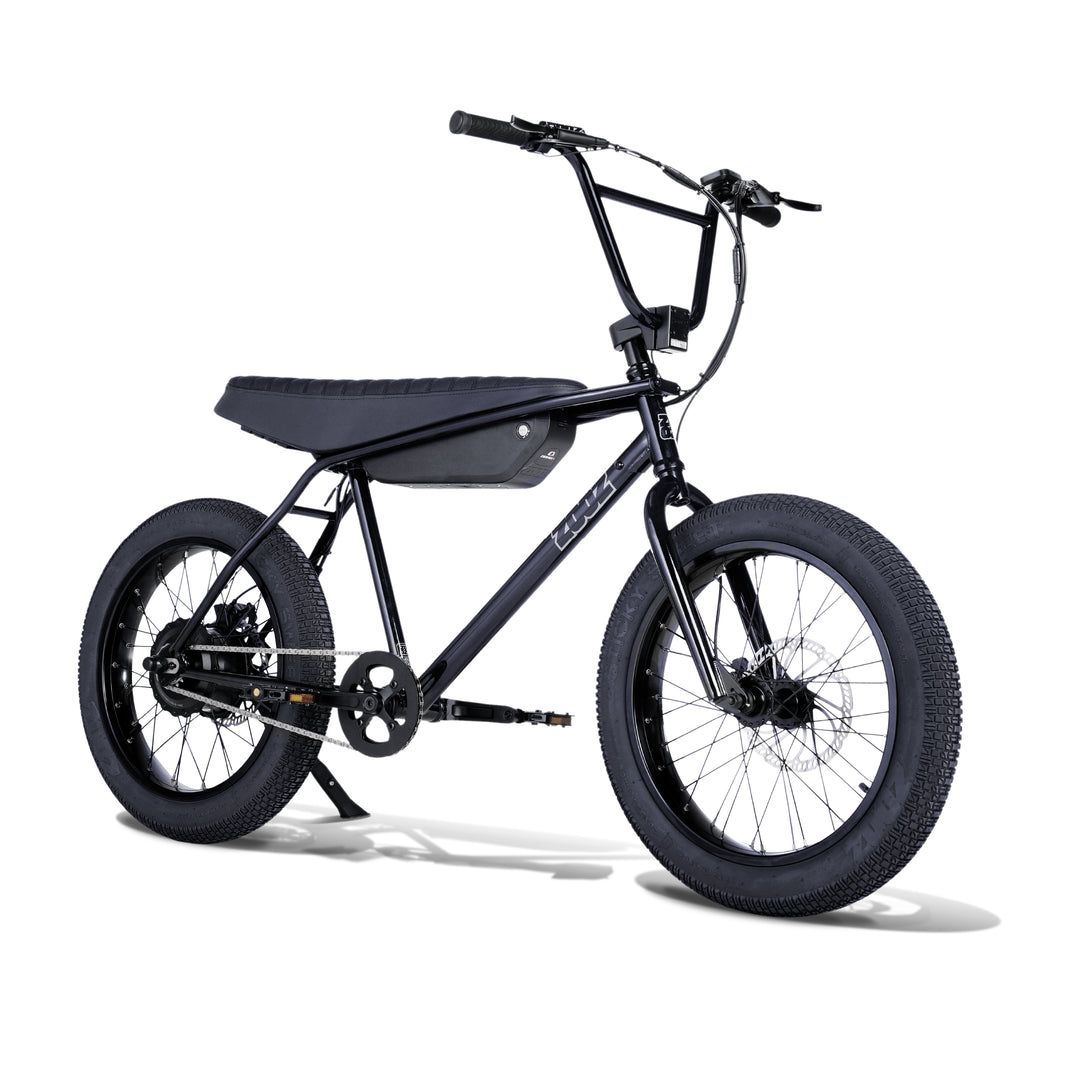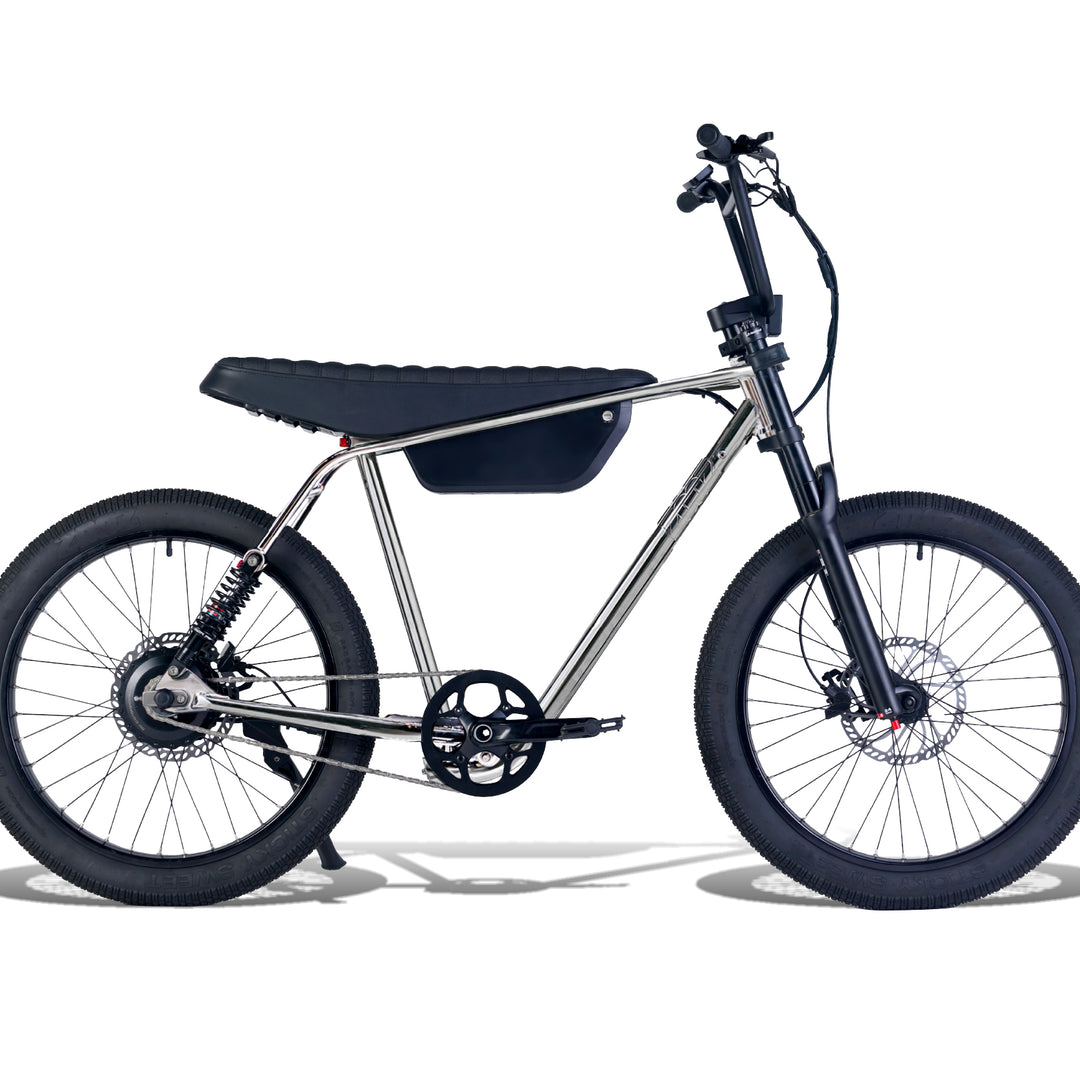Volts, Amps and Watts, explained...
The most important component an e-bike is the battery, which powers the electric motor. To get the most out of your e-bike, it's important to understand the concepts of voltage, amperage, and wattage is fundamental to the kind of performance you can expect from your ebike.
Let’s discuss what V x A = W means for power output.
Voltage, measured in volts (V), is essentially the "pressure" that drives the electric current through a circuit. The higher the voltage, the more power the battery can deliver to the motor which will affect both acceleration and top speed.
Another way to think of voltage is in terms of potential energy. Think of a water tower that is full of water. The weight of that water is putting a lot of pressure to flow water through that tube that brings the water to the ground. However, if the water tower was almost empty, the lesser overall weight of the water would mean less water pressure in the tube. Now imagine a waterwheel at the end of that tube… higher water pressure is going to turn that water wheel faster than if the water pressure were low. In electric motor terms, higher voltage will mean more power and speed than lower voltage.
The last thing to note about voltage is that each battery has an operational voltage range. Any battery, both individual cell or a battery pack of multiple cells, will have a voltage range. That is, the maximum a battery can be charged, and minimum charge. Operating outside of this voltage range can damage a battery. Voltage of a battery is classified by it's nominal voltage rating, which is the midpoint between the maximum voltage and the minimum voltage of a battery. For example, a 52v battery will have 58v when fully charged and 46v when fully discharged, 52v being the midpoint. Keep this concept in mind for the end of this blog post.
Now let’s talk about amperage, measured in amperes (A), is the rate at which electric current flows through a conductor. It is a measure of the amount of electric charge passing a point in a circuit per unit of time. The higher the amperage, the more power the battery can deliver to the motor.
Let’s go back to the water tower. Thing of amperage as the width of the tube bringing the water to the ground. If the water tower is full, how fast can you move all that water through the tube? This is the measurement of Amps and it affects how well you deliver the energy stored in the battery to the motor. An ebike will have two Amp figures that are important to note — rated amps and peak amps. Rated amps is how much electrify can flow from the battery, through the controller and into the motor and just keep on going, hypothetically forever. Peak amps is the maximum amount of electrify the system can handle, but only for a short amount of time. Peak amps would be utilized when accelerating, carrying a heavy load or going up a hill. Keep this concept in mind for the end of this blog post.
Wattage, measured in watts (W), is the rate at which energy is transferred or consumed. It is a measure of the rate at which electric power is being used. The wattage of an e-bike battery is determined by the voltage and amperage of the battery. To determine the wattage of your e-bike battery, simply multiply the voltage by the amperage. For example, if your e-bike battery has a voltage of 36V and an amperage of 10A, the wattage of the battery would be 360W.
It is important to note that the wattage of an e-bike battery does not necessarily determine the performance of the e-bike as the wattage is always changing. Remember how a full battery has more voltage than an empty battery? We’ll that means that the first factor of the V x A = W equation will be changing over the duration of your ride. Next, are you cruising on flat land at top speed or are you starting from a stop with a full load at the bottom of a hill? Both conditions will produce a lower or higher number of amps respectively, and will have a massive impact on watts in the V x A = W equation.
Since Volts and Amps are varying throughout the duration of any ride, wattage figures will swing widely which makes the measurement of wattage quite random unless you are trying to determine the maximum power transferred to the wheel, which would logically be done at full charge (maximum Volts) and at peak amperage (maximum Amps).
In the USA, the federal guideline for a class 1, 2 or 3 bike is 750W rated. To get "rated" watts, you use the same V x A = W equation with nominal voltage and rated amps.
This is where ZOOZ stands out against the competition because both volts and amps have been very carefully selected for each of our drivetrains. We have maximized the voltage of each system while still keeping the rated wattage under the legal limit. However, each of our drivetrains are able to reach a much high peak amperage which allows for high wattage output to specifically deliver the best performance and range capacities while still remaining a class 2 bicycle.









